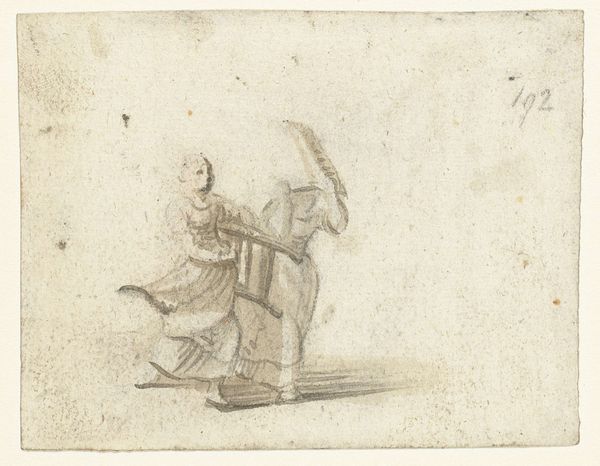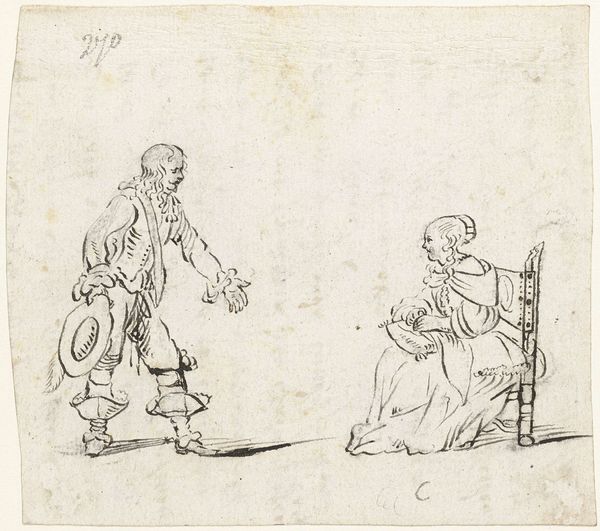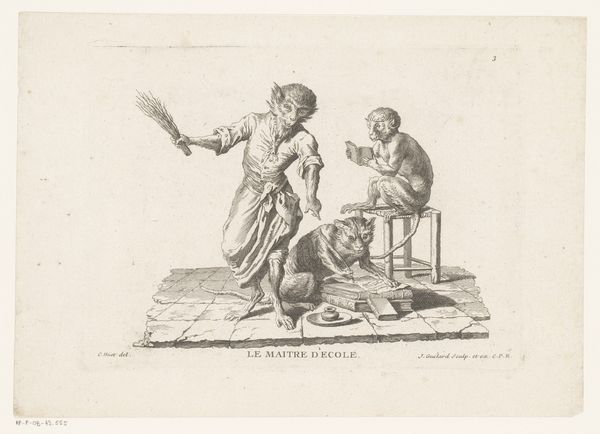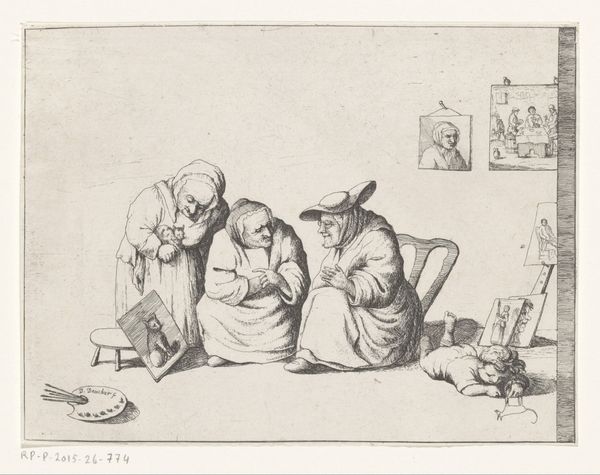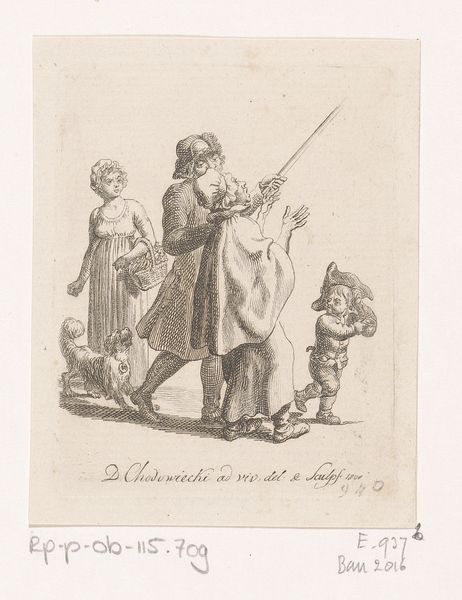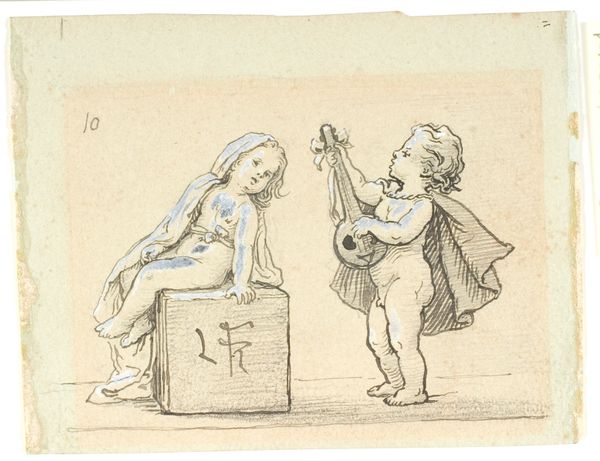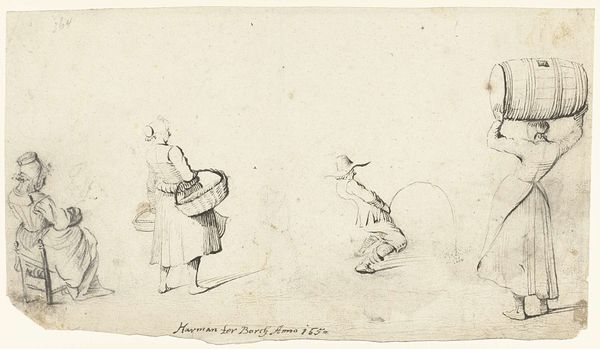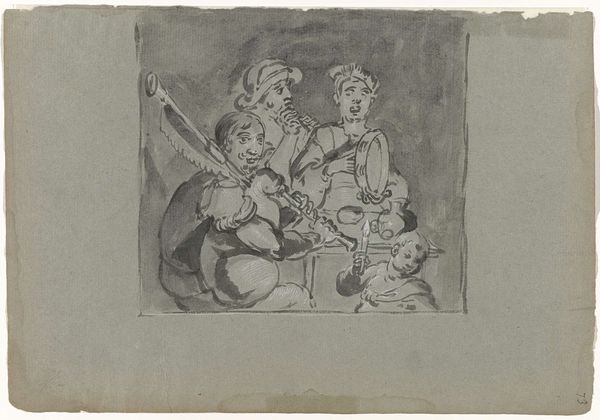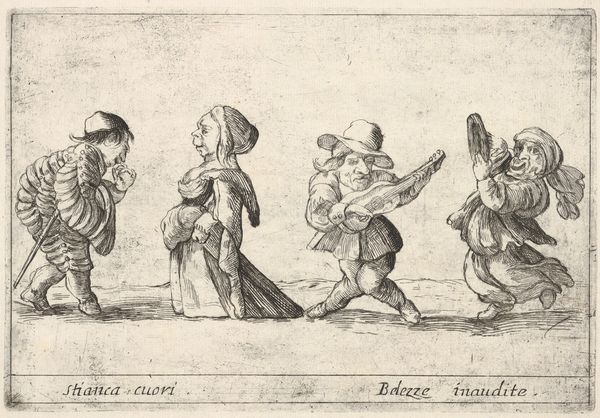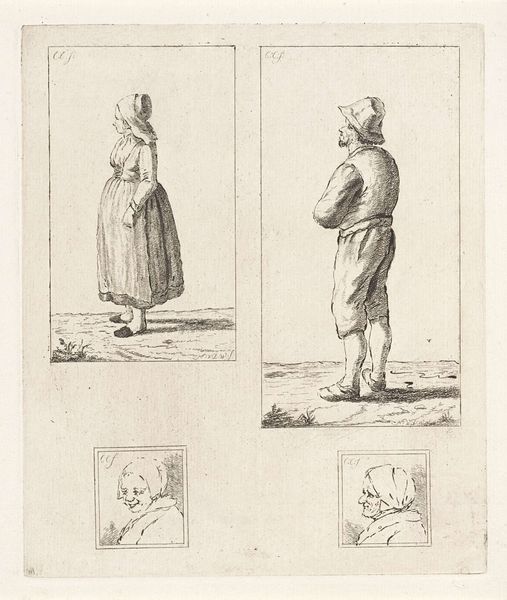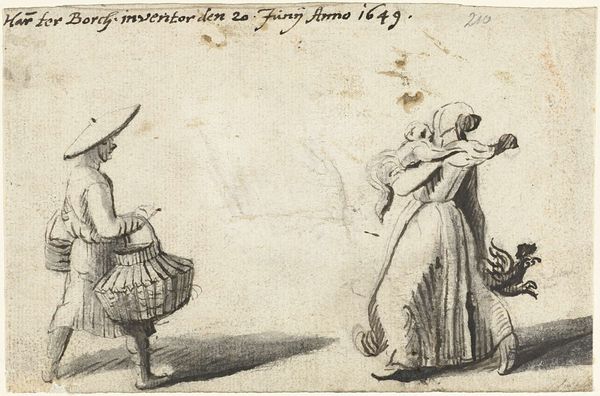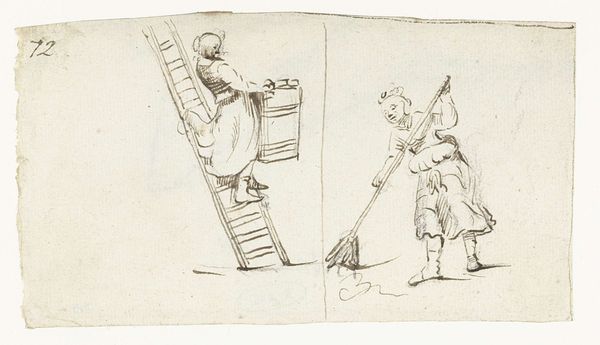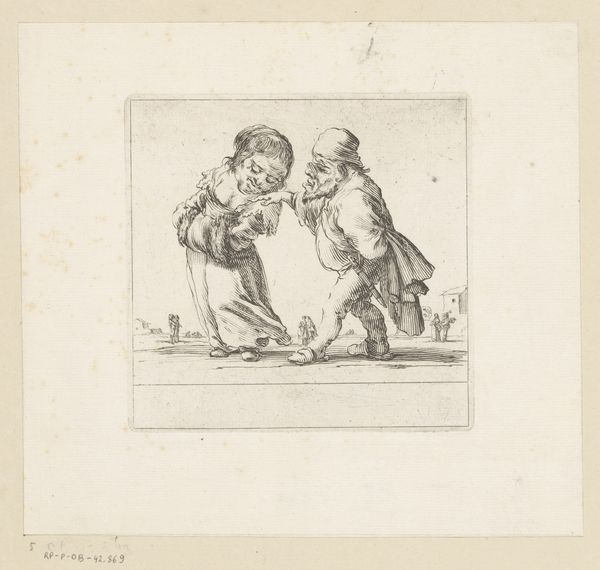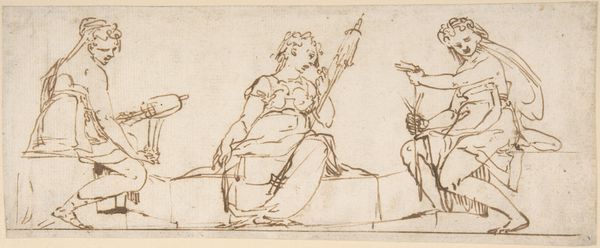
drawing, pencil
#
portrait
#
drawing
#
dutch-golden-age
#
pencil sketch
#
figuration
#
pencil
#
genre-painting
Dimensions: height 107 mm, width 160 mm
Copyright: Rijks Museum: Open Domain
Harmen ter Borch made this drawing of two children in 1650 using graphite. It gives us a glimpse into the world of the Dutch Golden Age, a time of immense economic and cultural growth for the Netherlands. One child is seated, perhaps learning to sew, while the other plays the violin. The presence of music suggests a cultured, possibly affluent household, reflecting the rising middle class of the era. The Dutch Republic was unique in 17th-century Europe. Its society was characterized by religious tolerance, republicanism, and a thriving market economy. Art played a central role in shaping national identity and projecting values of civic virtue, domesticity, and prosperity. Ter Borch's drawing reflects these values, portraying children engaged in activities that promote discipline, skill, and refinement. To truly understand this work, we need to delve into the social and economic history of the Dutch Golden Age, examining sources like period documents, and studies of Dutch art. Doing so helps to understand the society that shaped its creation.
Comments
rijksmuseum about 2 years ago
⋮
Harmen ter Borch was the most prolific member of his artistic family. Over 200 drawings can be attributed to him. Many sheets bear notes and dates written by his father, Gerard ter Borch. From this emerges that Harmen drew chiefly in the winter months, when it was too cold to venture outdoors.
Join the conversation
Join millions of artists and users on Artera today and experience the ultimate creative platform.
